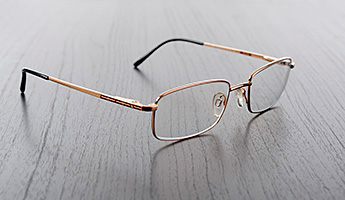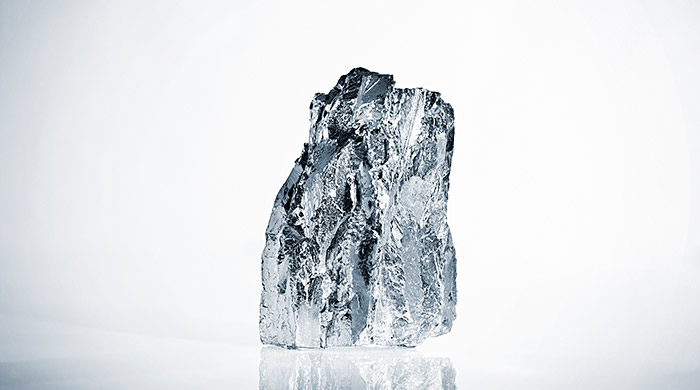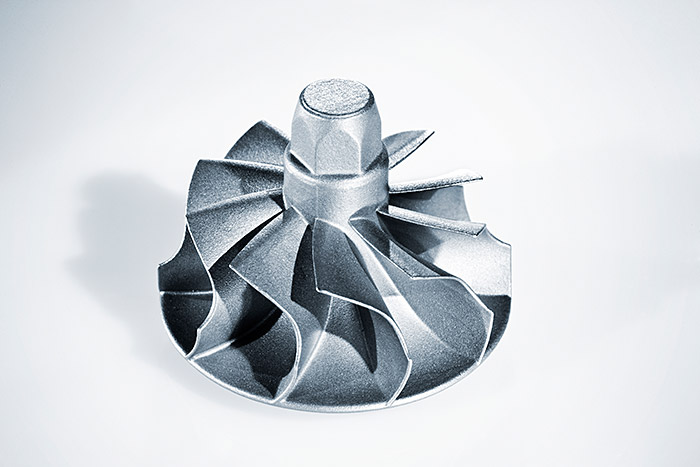As you can see from my profile, I have been involved in the sale of chromium metal and the associated consulting and service for over 30 years.
Chromium is a chemical element, with the symbol Cr. Its atomic number is 24; it is the first element in group 6, and has a high melting point. Its melting point is approximately 1900 degrees Celsius. It is steel grey in color and has a glossy surface. Chromium metal has been used industrially for over 200 years. Chromium metal can be produced by means of electrolysis (around 30% of consumption), in which it takes the form of flakes. Its manufacture is naturally very cost-intensive.
However, chromium metal can also be produced aluminothermically. In this process, chromium oxide of metallurgical quality is mixed with aluminum in a crucible and then ignited. The chemical reaction produces so-called chromium corundum (chromium slag) that proportionately contains pure chromium metal.
Chromium metal is produced for sale in forms ranging from pellets to powder. The consumption of pure chromium metal is around 40,000 mt worldwide. Pure chromium metal is used in the aerospace industry, in the production of gas turbines, in medical alloys (implants, dental), in the chemical industry, in the automotive industry, in the steel industry, in foundries, in the coating industry (surface protection, foil coating), in fuel cells, in solar modules, in welding electrodes, and in energy Servers.


Markets:
- Materials for vacuum deposition
- Automotive
- Fuel cells
- Chemical industry
- Manufacturers of permanent magnets
- Dental
- Energy Servers / interconnectors
- Research institutes
- Foundries
- Glass industry
- Implant manufacturers
- Optical industry
- Powder metallurgy
- PVD and CVD users
- Welding electrodes
- Solar modules
- Special alloys
- Steelworks
- Manufacturers of stationary gas turbines
- Super-alloys (high-temperature alloys)
- Target manufacturers
- Engine manufacturers
- Universities
- Protection against wear
- Pre-alloys (master alloys)
Metals
Aluminum, beryllium, lead, boron, chromium metal aluminothermic, chromium metal electrolytic, iron, germanium, cobalt metal, copper, magnesium, nickel, niobium, mercury, selenium, silicon, tantalum, tellurium, titanium, vanadium, bismuth, tungsten, zirconium

Alloys
Ferro-alloys such as ferroaluminum, ferroboron, ferrochromium, ferromanganese, ferroniobium, ferrosilicon, ferrotitanium
Coating materials for PVD (Physical Vapor Deposition)
- High-purity metals from aluminum 99.999% to zirconium 99.8 %
- Aluminum alloys such as AlCr
- Chromium alloys such as CrNi,CrTi, CrAl
- Ferrous alloys from FeB to FeZr
- Cobalt alloys such as CoB
- Copper alloys such as CuB
- Nickel alloys from NiAl to NiV
- Tantalum alloys such as TaNb or TaTi
- Titanium alloys from TiAl to TiZr
- Tin alloys
Rare earth magnetic alloys such as CoSm or NdDyFeB
Alloys for the production of super-alloys
- Chromium aluminum, chromium nickel
- Nickel alloys such as NiMo, NiNb, NiTa, NiW, NiZr
Alloys for the welding industry
- Chromium metal powder
- Ferroaluminum
- Ferroboron
- Ferrochromium
- Ferroniobium
- Ferrotitanium
Hard metal raw materials such as chromium carbide, titanium carbide and tungsten carbide
Steel powder 316 L
Semi-finished products
- TARGETS cast or produced by powder metallurgy
Forms supplied
- Pellets (mechanically comminuted) or powder (mechanically comminuted, water-atomized, air-atomized and gas-atomized)
- Flakes
Production procedures
- Aluminothermic
- Electrolysis
- Hot-melt metallurgy such as induction melting
- Powder metallurgy

